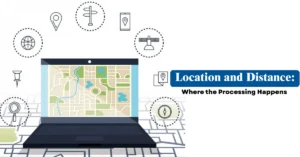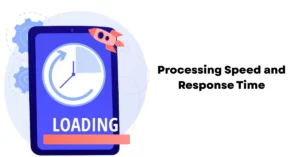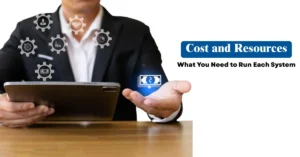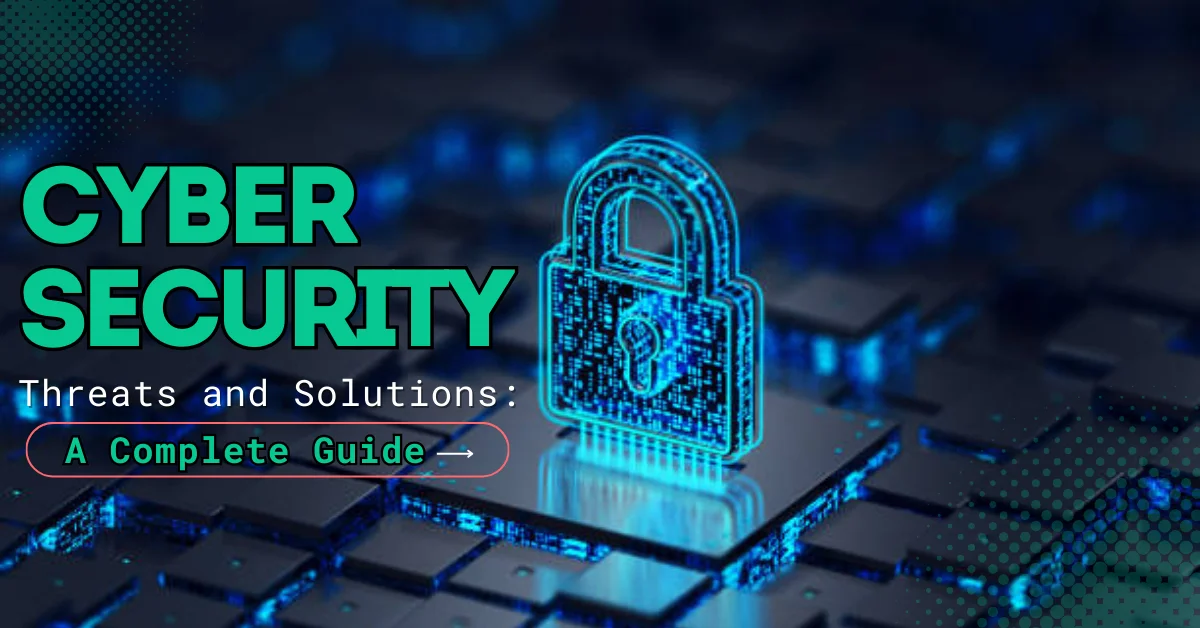
Edge Computing vs Cloud Computing: 5 Key Differences You Should Know
- 33
- 0
- 0
Edge Computing vs Cloud Computing
Edge computing and cloud computing are two technologies that help process data, but they work differently. Cloud computing stores and processes data in large, centralized data centres that are far from the end user, providing resources over the Internet. It’s great for large-scale data handling and complex tasks. On the other hand, edge computing processes data closer to where it’s generated, like on devices or local servers. This reduces the time it takes for data to travel, making it faster for real-time decisions. Key differences include speed, with edge computing being quicker for time-sensitive tasks, and location, with cloud computing relying on remote servers. Both have their advantages, depending on the needs of businesses and applications.
Edge Computing: Powering Real-Time Decisions, Right at the Source
Edge computing is a technology that processes data closer to where it is generated, such as on devices, sensors, or local servers, rather than sending it to a distant cloud server. This helps reduce latency, or the time delay, allowing for faster decision-making and real-time responses. It’s especially useful for applications that require quick processing, like autonomous vehicles, smart devices, or industrial machinery. By handling data locally, edge computing also reduces bandwidth usage and reliance on centralized cloud infrastructure, making it more efficient for certain tasks. In simple terms, edge computing brings computing power to the “edge” of the network, closer to the data source.
Cloud Computing: Access, Store, and Scale Anytime, Anywhere
Cloud computing is a technology that allows you to access and store data, software, and services over the internet, instead of relying on your local computer or device. It works by using remote servers, usually located in data centres, to manage and process data. This means you can access applications, store files, or run programs from anywhere, as long as you have an internet connection. Cloud computing is scalable, meaning you can increase or decrease your resources based on your needs. It’s commonly used for services like online storage, hosting websites, or running complex software applications without needing to invest in physical infrastructure.
Edge Computing vs Cloud Computing: 5 Key Differences You Should Know
The world of computing keeps changing, and two terms you’ll often hear are edge computing and cloud computing. While both help businesses and users process data, they work in very different ways. Let’s break down the main differences between these two approaches to help you understand which one might work better for your needs.
Location and Distance: Where the Processing Happens

Cloud computing runs everything from far-away data centres. When you use cloud services like Google Drive or Dropbox, your data travels to these centres, which could be hundreds or thousands of miles away. Think of it like mailing a package to a warehouse for processing – it takes time to get there and come back.
Edge computing, on the other hand, brings processing closer to where the data comes from. Instead of sending data to distant servers, edge computing handles it right near the source. It’s like having a small processing centre right in your neighbourhood. For example, a smart traffic light system using edge computing would process data right at the intersection rather than sending it to a faraway server.
This difference in location affects how quickly things happen. Edge computing can respond faster because data doesn’t have to travel as far. This makes it perfect for tasks that need instant responses, like self-driving cars or emergency response systems.
Processing Speed and Response Time

The speed difference between edge and cloud computing is significant. Cloud computing might take longer because data needs to:
- Travel from your device to the data centre
- Get processed at the centre
- Travel back to your device with the results
This round trip can take anywhere from a few hundred milliseconds to several seconds, depending on your internet connection and the data centre’s location.
Edge computing cuts this time dramatically. Since processing happens closer to the source, responses can come in just a few milliseconds. This might not seem like much, but it makes a huge difference for:
- Virtual reality games that need instant response
- Factory robots that must react immediately to changes
- Medical devices that monitor patients
- Security systems that need to spot and respond to threats quickly
Cost and Resources: What You Need to Run Each System

Cloud computing often saves money upfront because you don’t need to buy and maintain your equipment. You pay for what you use, like renting space in someone else’s warehouse. This works well for:
- Small businesses that can’t afford their data centres
- Companies with varying computing needs
- Projects that need to scale up or down quickly
Edge computing usually costs more to set up because you need to buy and install equipment at each location where you want to process data. You’ll need:
- Processing units at each site
- Maintenance for all these locations
- Power and cooling systems
- Security measures for each spot
However, edge computing might save money in the long run by:
- Reducing the amount of data sent to cloud servers
- Cutting down on bandwidth costs
- Lowering long-term storage expenses
Reliability and Internet Dependency

Cloud computing depends heavily on internet connections. If your internet goes down, you might lose entry to:
- Your stored files
- Processing capabilities
- Important applications
- Real-time services
Edge computing keeps working even with poor or no internet connection because the processing happens locally. This makes it better for:
- Remote locations with weak internet
- Critical systems that can’t risk downtime
- Places where internet service isn’t reliable
- Emergency response systems
Think of cloud computing like watching a movie on Netflix – you need good internet to watch it. Edge computing is more like watching a downloaded movie on your device – it works even without the internet.
Security and Data Protection

Both systems handle security differently. Cloud computing centralizes data in secure data centres with:
- Professional security teams
- Regular updates and maintenance
- Strong encryption
- Backup systems
However, having all the data in one place can make it a target for attacks. If someone breaks into a cloud system, they might access lots of data at once.
Edge computing spreads out data across many locations, which can be both good and bad for security: Good:
- Data stays closer to its source
- Less sensitive information travels over networks
- Each location can have its security measures
Bad:
- More points to protect
- Harder to maintain security across all locations
- Need for local security expertise
Real-World Examples
Let’s look at how these differences play out in real situations:
Smart Cities:
- Edge computing: Traffic lights adjust instantly to traffic patterns using local sensors
- Cloud computing: City planners analyze monthly traffic data to plan road improvements
Manufacturing:
- Edge computing: Factory machines stop immediately if they detect a problem
- Cloud computing: Production data gets analyzed to improve efficiency over time
Healthcare:
- Edge computing: Patient monitoring devices respond instantly to emergencies
- Cloud computing: Hospital systems store and analyze patient records
Making Your Choice
When deciding between edge and cloud computing, think about:
What matters most to your needs:
- Speed: Edge computing wins for instant responses
- Cost: Cloud computing often costs less to start
- Reliability: Edge computing works better without perfect internet
- Scale: Cloud computing makes growing easier
- Security: Both have strengths, depending on your needs
Remember that you don’t always have to pick just one. Many successful systems use both:
- Edge computing for immediate processing needs
- Cloud computing for storage and deeper analysis
The technology world keeps changing, and both edge and cloud computing will keep getting better. Understanding their differences helps you pick the right tool for your needs, whether you’re running a business, building new technology, or just trying to understand how your devices work.
By knowing these five main differences, you can make better choices about which system works best for your specific situation. Both approaches have their place in modern computing, and often the best solution involves using them together to get the benefits of both.
FAQs
What is the main difference between edge computing and cloud computing?
Edge computing processes data closer to where it is generated, reducing delay. Cloud computing processes data in remote servers over the internet, offering more storage and computing power but with potential latency.
Which one is faster, edge computing or cloud computing?
Edge computing is faster because it processes data near the source, reducing the time needed to send it to distant cloud servers. Cloud computing may experience delays due to data travelling long distances.
Which is better for real-time applications?
Edge computing is better for real-time needs like smart devices, self-driving cars, and gaming, as it processes data instantly. Cloud computing is great for storage, analytics, and tasks that don’t need instant results.
Is edge computing more secure than cloud computing?
Edge computing keeps data closer to the user, reducing risks from cyberattacks on big cloud data centres. However, cloud computing offers strong security protocols but is more vulnerable to large-scale breaches.
Which one is more cost-effective?
Cloud computing is usually more cost-effective for businesses needing large storage and computing power. Edge computing can be costly due to hardware setup but saves money on data transfer and faster processing.
Also Read:
5 Best Skills to Learn for High-Paying Jobs in 2025
References:
https://en.wikipedia.org/wiki/Edge_computing
https://en.wikipedia.org/wiki/Cloud_computing
Disclaimer:
This blog is for informational purposes only. Technology evolves rapidly, and specifics may change over time. Always consult IT professionals before making decisions. We do not guarantee accuracy or assume liability for any actions taken based on this content.
Related post

Cybersecurity Threats and Solutions: A Complete Guide


